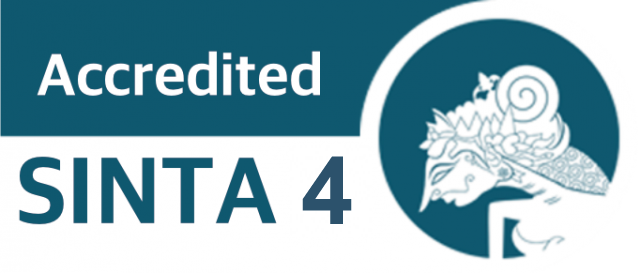Application of a guided inquiry learning model assisted by a student worksheet to improve high school students analytical skills
DOI:
10.29303/jpm.v17i1.3251Published:
2022-01-23Issue:
Vol. 17 No. 1 (2022): January 2022Keywords:
Guided Inquiry Model, Analysis Ability, Reaction RateArticles
Downloads
How to Cite
Downloads
Metrics
Abstract
This study aims to determine the guided inquiry learning model's implementation effect on students' activities, students' analytical skills, and student responses on the reaction rate material. This study used the one-group pretest-posttest design. The subjects in this study were students of the eleventh grade of IPA 1 at SMA Kemala Bhayangkari 1 Surabaya. The instruments used include learning model implementation sheets, student activity sheets, analytical ability test sheets, and student response questionnaires. The results showed that (1) the quality of the guided inquiry learning model application during two meetings from phase one to six are in very good criteria. (2) The activities of students in two meetings have the percentage of activity time related to analyzing at the first and second meetings of 77.2% and 81.99%, respectively. (3) The results of the analysis ability of students with a percentage gain score are 85.81% on the high criteria. (4) The percentage of student responses, 87%, agrees that learning using the guided inquiry learning model can train and improve analytical skills.References
Made, Wena. (2011). Strategi Pembelajaran Inovatif Kontemporer: Suatu Tinjauan. Konseptual Operasional. Jakarta: PT. Bumi Aksara.
Achmad, Hiskia dan Bardja, Lubna. (2012). Demonstrasi Sains Kimia: Kimia Deskriptif Melalui Demo Kimia. Bandung: Nuansa.
Khasanah, Nikmatul dan Azizah, Utiya. (2018). Melatihkan Keterampilan Berpikir Kritis Siswa Melalui Penerapan Model Kooperatif Tipe Group Investigation (GI) pada Materi Laju Reaksi di SMA Negeri 1 Manyar. UNESA Journal of Chemical Education. Vol. 7 (1): hal. 81-86.
Suherman, E. dan Sukjaya, Y. (1990). Petunjuk Praktis untuk Melaksanakan Evaluasi Pendidikan Matematika. Bandung: Wijayakusumah.
Arantika, J., Saputro, S., & Mulyani, S. (2019). Effectiveness of guided inquiry-based module to improve science process skills. In Journal of physics: conference series (Vol. 1157, No. 4, p. 042019). IOP Publishing.
Bloom, B.S. (1956). Taxonomy of Educational Objectives: Handbook 1, Cognitive Domain. New York: David McKay.
Trianto. (2011). Model Pembelajaran Terpadu Konsep Strategi Dan Implementasinya Dalam Kurikulum Tingkat Satuan Pendidikan. Jakarta : Bumi Aksara.
Hidayah, R., & Anggraeni, L. (2018). The Effectiveness of Guided Inquiry-Based Students Practicum Worksheet to Promote Science Process Skills In Reaction Rate. Proceedings of ICST 2018, 1, 11-13.
Novitasari, Putri dan Muchlis. (2020). Penerapan Model Pembelajaran Inkuiri Terbimbing Untuk Meningkatkan Keterampilan Berpikir Analisis Siswa Pada Materi Kesetimbangan Kimia Kelas XI SMA Negeri 4 Sidoarjo. UNESA Journal of Chemical Education. Vol. 9 (1): hal. 16-20.
Herjinda, Winda dan Muchlis. (2015). Penerapan Model Pembelajaran Inkuiri Terbimbing untuk Melatihkan Keterampilan Berpikir Kritis pada Materi Pokok Asam Basa Kelas XI SMAN 2 Magetan. UNESA Journal of Chemical Education. Vol. 4 (2): hal. 325-332.
Sugiyono. (2015). Metode Penelitian Pendidikan. Bandung: Alfabeta.
Mahyuna, M., Adlim, M., & Saminan, I. (2018). Developing guided-inquiry-student worksheets to improve the science process skills of high school students on the heat concept. In Journal of Physics: Conference Series (Vol. 1088, No. 1, p. 012114). IOP Publishing.
Sugiyono. (2016). Quantitative, Qualitative and R&D Research Methods. Bandung : PT Alphabet.
Devi Wahyuningtyas, Utiya Azizah . (2013) . Implementation Of Inquiry Learning Model To Train Process Skill In Acid Base Matter For Grade XI Student Of Sma Negeri 15 Surabaya. UNESA Journal of Chemical Education , Vol. 2, No. 2, pp. 101-107.
Munfaricha, F., & Ismono. (2018). Penerapan Lembar Kerja Siswa (LKS) Berbasis Inkuiri Terbimbing dalam Meningkatkan Keterampilan Berpikir Kritis Siswa pada Sub Materi Faktor-Faktor yang Mempengaruhi Laju Reaksi. Unesa Journal of Chemical Education.
Sudjana. 2006. Metode Statistik. Jakarta: Rineka Cipta
Hake, Richard. R. (1999). Analyzing Chane/Gain Score. AREA-D American Education Research Associationââ¬â¢s Division Measurement and Research Methodology.
Aprillia, R. D. (2016). Implementation Of Semi Guided Inquiry Learning Model To Practice Studentsââ¬â¢Critical Thinking Skill At Polar And Non Polar Covalent Bonding Topic. UNESA Journal of Chemical Education, 5(1).
Sanjaya, Wina. (2008). Strategi Pembelajaran Berorientasi Standar Proses Pendidikan. Jakarta: Prenada Media Goup.
Wulansari, N. E. (2020). Implementation of Guided Inquiry Learning Models Train Critical Thinking Skills In Reaction Rate Materials For Eleven Class SMAN 3 Lamongan. UNESA Journal of Chemical Education, 9(1).
Sudarsana, I M. 2010. Pembuatan Program Pembelajaran Interaktif Laju Reaksi Berbantuan Komputer untuk Pembelajaran Kimia SMA. Skripsi tidak dipublikasikan. Singaraja: Universitas Pendidikan Ganesha.
Fauziah, N., Hakim, A., & Andayani, Y. (2019). Meningkatkan literasi sains peserta didik melalui pembelajaran berbasis masalah berorientasi green chemistry pada materi laju reaksi. Jurnal Pijar MIPA, 14(2), 31-35.
Author Biographies
Lelitya Nurmawati, Universitas Negeri Surabaya
Dian Novita, Universitas Negeri Surabaya
License
The following terms apply to authors who publish in this journal:
1. Authors retain copyright and grant the journal first publication rights, with the work simultaneously licensed under a Creative Commons Attribution License 4.0 International License (CC-BY License) that allows others to share the work with an acknowledgment of the work's authorship and first publication in this journal.
2. Authors may enter into separate, additional contractual arrangements for the non-exclusive distribution of the journal's published version of the work (e.g., posting it to an institutional repository or publishing it in a book), acknowledging its initial publication in this journal.
3. Before and during the submission process, authors are permitted and encouraged to post their work online (e.g., in institutional repositories or on their website), as this can lead to productive exchanges as well as earlier and greater citation of published work (See The Effect of Open Access).











